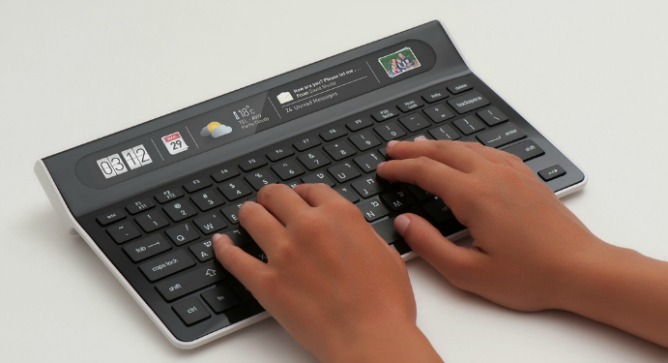In the ever-evolving world of technology, the keyboard with display emerges as an innovative and versatile solution for modern-day computing needs. Combining the tactile utility of a traditional keyboard with the visual functionality of a built-in screen, this futuristic device promises to redefine how we interact with computers. Let’s dive into its features, applications, and future potential.
The Concept Behind Keyboards with Display
A keyboard with display integrates an LCD, LED, or e-ink screen within the keyboard structure. This display can either replace traditional keys, as seen in dynamic OLED keyboards, or coexist alongside the keys, providing additional functionality. By merging input and output into one device, this technology creates opportunities for more efficient workflows, customization, and enhanced accessibility.
Features That Set Them Apart
1. Customizable Key Functions
The display on these keyboards allows each key to adapt to specific software or tasks. For instance, graphic designers can program shortcut keys with tool icons, while gamers can map custom commands with illuminated visuals.
2. Interactive Feedback
The display provides real-time feedback, such as notifications, system performance metrics, or even interactive tutorials. This minimizes the need to switch focus between the keyboard and the primary screen.
3. Enhanced Aesthetics and Ergonomics
Modern keyboards with displays often come with sleek, futuristic designs. Their intuitive interfaces can simplify complex tasks, reducing cognitive load and improving user comfort.
Applications of Keyboards with Display
1. Professional Workflows
In creative industries, such as video editing, animation, and programming, a keyboard with display streamlines repetitive tasks. Designers can benefit from tool-specific layouts, while coders can visualize syntax errors or debugging information directly on the keyboard.
2. Gaming Revolution
For gamers, this technology opens up new realms of immersion. Displays can show game stats, health meters, or skill cooldowns without the need for an external HUD.
3. Accessibility and Learning
Keyboards with displays can be a boon for accessibility, offering real-time translations, visually guided typing, or even Braille-like tactile displays for visually impaired users. In educational settings, they can enhance interactive learning experiences.
Challenges and Limitations
While promising, the adoption of keyboards with display faces several hurdles:
- Cost: Advanced technology often comes at a premium price, which can limit accessibility for casual users.
- Durability: The integration of screens increases the risk of wear and tear. Robust materials and engineering are essential for longevity.
- Compatibility: Seamless integration with various operating systems and applications is still a work in progress.
The Future of Keyboards with Display
The trajectory of this technology points toward widespread adoption in both professional and personal settings. As costs decrease and innovation continues, these keyboards may evolve to include features like augmented reality (AR) overlays, modular designs, and even AI-driven customization that adapts to user behavior.
Moreover, the integration of voice and touch controls could make keyboards with displays the centerpiece of future workstations. With the potential to merge seamlessly with the Internet of Things (IoT), these devices might become integral to smart homes and offices.
Conclusion
The keyboard with display represents a leap forward in human-computer interaction, offering unparalleled versatility and efficiency. From streamlining workflows to revolutionizing gaming, its applications are as diverse as its users. While challenges remain, the future promises exciting developments that could make this technology a staple in every tech-savvy individual’s arsenal.
By merging functionality with innovation, keyboards with displays are not just tools—they are a glimpse into the future of computing.










